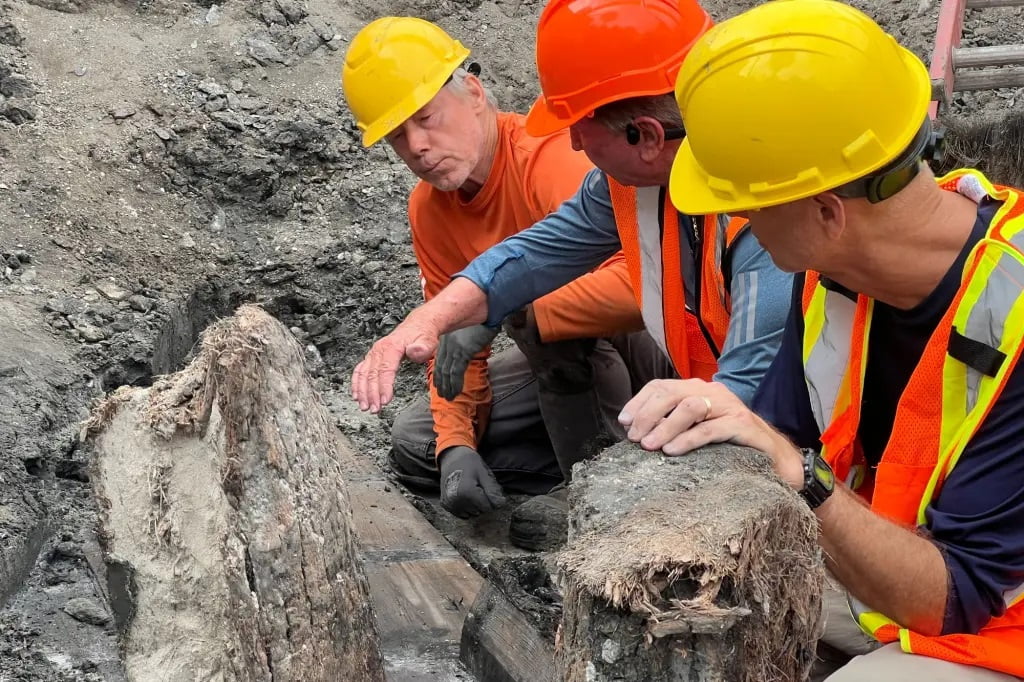In a remarkable turn of events, a routine construction project in Florida has unearthed a well-preserved shipwreck from the 1800s, leaving experts and historians astounded. This 20-foot-long relic, discovered buried beneath approximately eight to ten feet of sediment near the iconic Bridge of Lions in St. Augustine, has captivated the world with its historical significance. In this article, we delve into the intriguing details surrounding this unexpected find and the tireless efforts to unearth its secrets.
The Astonishing Discovery
Road crews in Florida stumbled upon this centuries-old shipwreck while conducting routine construction work, bringing their activities to a sudden halt. The artifact, estimated to hail from the 1800s, was remarkably well-preserved, even yielding a perfectly intact leather boot. As it turns out, the vessel had been concealed by layers of soil and mud, effectively shielding it from exposure to air and decay. Greg Evans, the Florida Department of Transportation (FDOT) District 2 Secretary, offers an insight into this extraordinary find, explaining, “We believe the vessel may have sank unexpectedly and, over time, was silted in. That is why it was preserved so well. It was encapsulated in soil and mud, so there was no air contact for it to decay. It’s truly an incredible find.”

The Unfolding Investigation
With the discovery shrouded in mystery, the FDOT is collaborating with SEARCH, a globally renowned archaeological organization that has executed over 4,500 projects in the United States and 36 other countries. The leader of this excavation and recovery, Dr. James Delgado of SEARCH, provides valuable insights, suggesting that the vessel was a “small single-masted, shallow-draft sailing craft of the 19th century.” While the ship’s origin remains enigmatic, it is clear that unearthing its tales will require time and meticulous efforts.

Preservation and Artifacts
The process of disassembling the shipwreck is a delicate one, with workers carefully dismantling it piece by piece. The wood salvaged from the wreck is being stored in a wet environment to stabilize it. The preservationists understand the urgency of their task, as the wood, once exposed to the elements, could quickly deteriorate. Ian Pawn, an archaeologist at the Florida Department of Transportation, shared some astonishing artifacts discovered within the ship, including leather shoes, coins (one dating back to 1869), coconut halves believed to have served as cups, and a part of an oil-fired lantern.
Race Against Time
The preservation team faces a race against time to protect the vessel from the ravages of decay. The boat has been meticulously disassembled, plank by plank, and removed, with each piece being stored in wet conditions to prevent further deterioration. Collaborating closely with archaeologists and the City of St. Augustine, the team aims to find a permanent home for this remarkable discovery.
Community’s Appreciation
The Florida Department of Transportation is fully aware of the unique historical significance of such findings within their construction sites. District 2 Secretary Greg Evans expresses his gratitude, saying in a Newsweek interview, “With every project we undertake, the Florida Department of Transportation is sensitive to the unique needs of the communities we serve, including the potential presence of historical sites and artifacts within construction sites. We look forward to learning more about its significance to the region.”



Conclusion
The unexpected discovery of an 1800s shipwreck buried beneath a Florida highway has left both experts and the community in awe. As archaeologists and preservationists work tirelessly to uncover its secrets and preserve its historical value, this remarkable find continues to unravel the mysteries of the past. It serves as a testament to the importance of safeguarding our historical heritage and underscores the extraordinary stories that lie hidden beneath the ground we walk on.


















